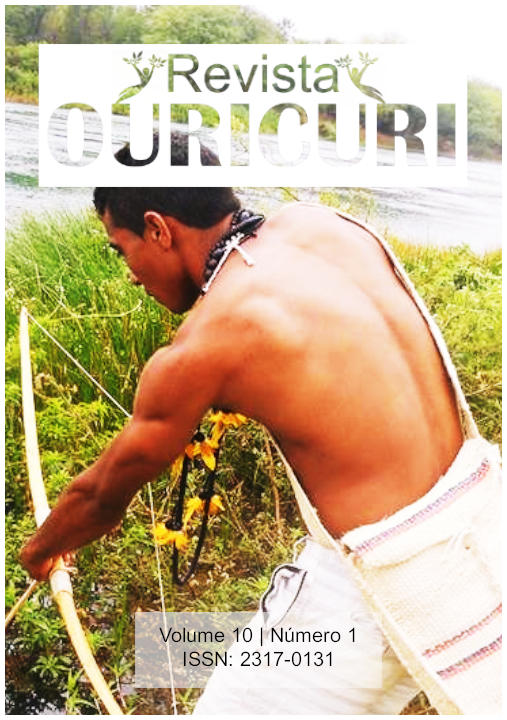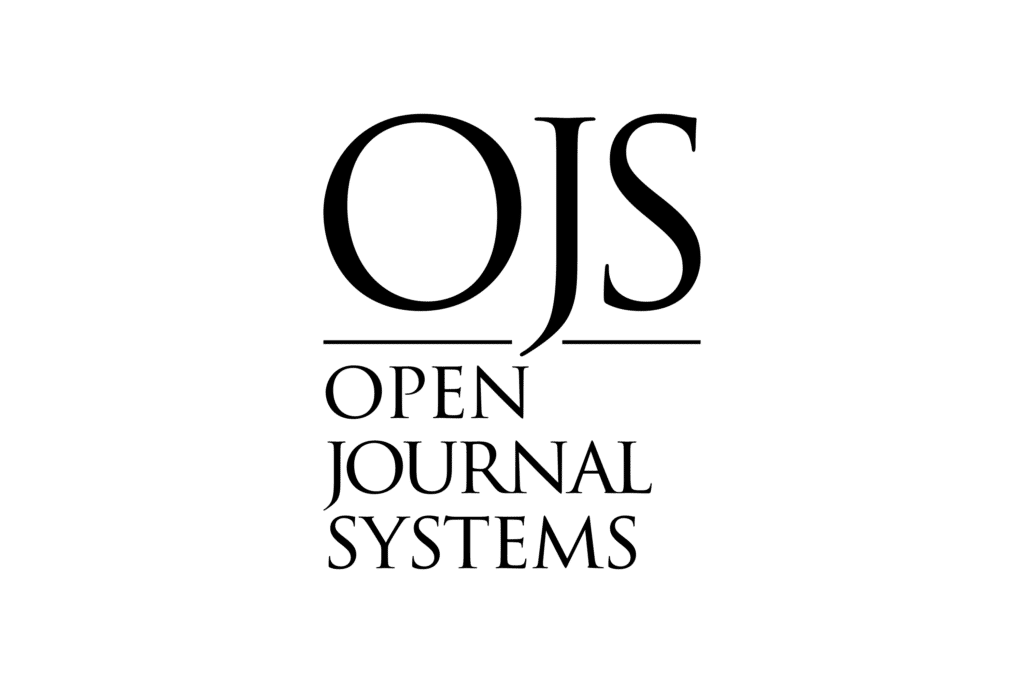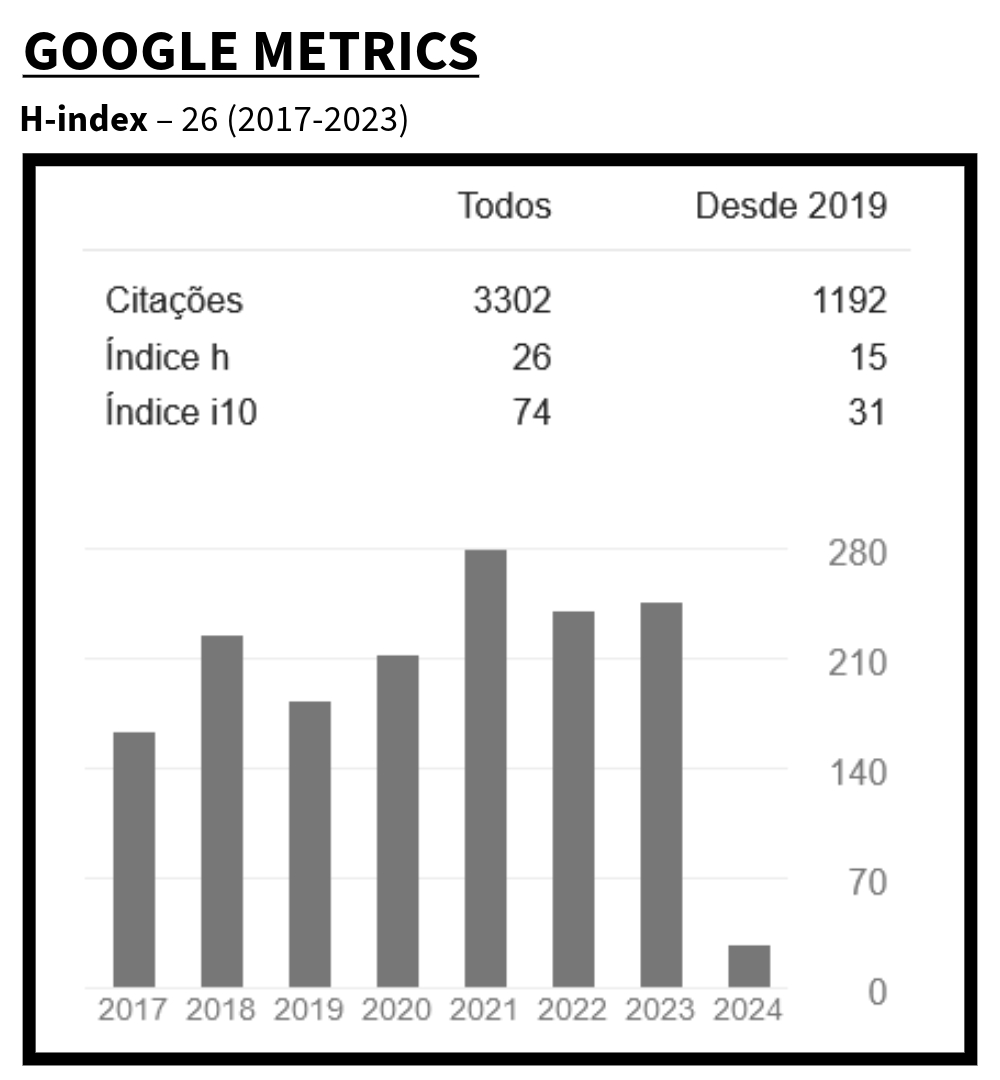THE IMPLICATIONS OF MIGRATION ON THE SOCIO-CULTURAL EXPRESSIONS OF TRUKÁ CAMIXÁ/BA INDIGENOUS PEOPLE
DOI:
https://doi.org/10.29327/ouricuri.10.1-2Abstract
Human migrations involve adaptations to the new environment occupied now; it includes how to appropriate the biodiversity available. This paper aims to describe the migration account of the Indigenous group, currently forming the Truká Camixá Village, and its implications on the socio-cultural expressions and the Truká identity with a focus on man-wildlife relations. Data have been collected from interviews and informal conversations with local leaders. To save the information, we have recorded interviews about how the community perceives, organizes, and manages their socio-cultural universe. Data were analyzed qualitatively and quantitatively in a junctional model of various individual competences in which all the information gathered is considered. Historically, the interaction with the wild fauna shows a predatory relation, and the animals consumed to supply protein necessity of the community, while its by-products used for therapeutic purposes. Some socio-cultural expressions of the Truká people persist in the Camixá village, viz. zootherapy, hunting, and the raising of wild-life animals as domestic ones.
Downloads
References
Albuquerque, U. P.; Cruz Da Cunha, L. V. F.; Lucena, R. F. P.;Alves, R. R. N. (eds.) Methods and Techniques in Ethnobiology and Ethnoecology. Springer Protocols Handbooks. 2014. 480p.
Almeida, S.; Franchin, A.;Marçal-Júnior, O. Estudo etnoornitológico no distrito rural de Florestina, município de Araguari, região do Triângulo Mineiro, Minas Gerais, Sitientibus Série Ciências Biológicas, 6, n. especial Etnobiologia, p. 26-36, 2006.
Almeida, A. W. B. et al. (Coords.) Nova cartografia social dos povos e comunidades tradicionais do Brasil: povo indígena Truká. Manaus, AM. UEA Edições, 2010.
Alves, R. R. N.; Nogueira, E.; Araujo, H.; Brooks, S. Bird keeping in the Caatinga, NE Brazil, Human Ecology London, 38, 147-156, 2010.
Alves, R. R. N.; Gonçalves, M. B. R.;Vieira, W. L. S. Caça, uso e conservação de vertebrados no semiárido Brasileiro, Tropical Conservation Science, 5(3), 394-416, 2012.
Arcanjo, J. A. Toré e Identidade Étnica: os Pipipã de Kambixuru (Índios da Serra Negra), (Dissertação de Mestrado), Universidade Federal de Pernambuco, 2003.Baines, S. As chamadas “aldeias urbanas” ou índios na cidade, Revista Brasil Indígena, 1(7),15-17, 2001.
Barbosa,B. F. Pernambuco: herança e poder indígena no Nordeste (séculos XVI-XVII)”. Recife: Ed.Universitária/UFPE, 2007.
Batista, M. M. R. O desencantamento da aldeia. Exercício antropológico a partir do Relatório Circunstanciado de Identificação e Delimitação da Terra Indígena Truká, Revista de Estudos e Pesquisas, v. 1, n. 2, p. 157-247, 2004.
Batista, M. M. R. Descobrindo e recebendo heranças: As lideranças Truká, (a doctoral dissertation), Universidade Federal do Rio de Janeiro, 2005.
Batista, M. M. R. Índio, quilombola, ribeirinho: o desafio do fazer antropológico em situações de disputas, In:Anais...VIII REUNIÓN DE ANTROPOLOGÍA DEL MERCOSUR (RAM), Buenos Aires, 2009.
Belliard,J. C.;Ramírez-Johnson, J. Medical pluralism in the life of a Mexican immigrant woman, Hispanic Journal of Behavioral Sciences, Vienna, 27(3),267-85, 2005.
Bezerra, D. M. M.; Araújo, H. F. P.;Alves, R. R. N. Wild birds as source of food in the semi-arid region of Rio Grande do Norte State, Brazil, Sitientibus Série Ciências Biológicas, 11, 177-183, 2012a.
Bezerra, D. M. M.; Araújo, H. F. P.;Alves, R. R. N. Captura de aves silvestres no semiárido brasileiro: técnicas cinegéticas e implicações para conservação, Tropical Conservation Science, 5, 50-66, 2012b.
Bezerra, E. C. M. Migrações Xukuru do Ororubá: memórias e História (1950-1990). (Dissertação de Mestrado), Universidade Federal de Pernambuco, 2012.
Burda, C. L.;Schiavetti, A. Análise ecológica da pesca artesanal em quatro comunidades pesqueiras da Costa de Itacaré, Bahia, Brasil: Subsídios para a Gestão Territorial. Revista da Gestão Costeira Integrada, 8(2), 149-168, 2008.
Casal, M. A. Corografia brasílica, Itatiaia, São Paulo, 1976.Ceuterick, M.; Vandebroek, I.; Pieroni, A. Crosscultural adaptation in urban ethnobotany: the Colombian folk pharmacopoeia in London, Journal of Ethnopharmacology, 120(3), 342-59, 2008.
Coimbra Jr., C. E. A.;Santos, R. V.Saúde, minorias e desigualdade: algumas teias de inter-relações, com ênfase nos povos indígenas no Brasil, Ciência e Saúde Coletiva, Rio de Janeiro, 5(1), 125-32, 2000.
Costa-Neto, E. M. Conhecimentos e usos tradicionais de recursos faunísticos por uma comunidade afro-brasileira, Resultados preliminares, Interciência, 25(9), 423-431, 2000.
Costa-Neto, E. M. Recursos animais utilizados na medicina tradicional dos índios Pankararé que habitam no nordeste do estado da Bahia, Brasil, Actual Biological, 1(21),69–79, 2009.
Fernandes-Ferreira, H.; Mendonça, S. V.; Ferreira, F. S.; Alves, R. R. N. Hunting, use and conservation of birds in Northeast Brazil, Biodiversity and Conservation, 21,221-244, 2012.
Florêncio, R. R.;Santos, C. A. B. Manifestações religiosas no contexto semiárido: um estudo Sobre hibridismo cultural e territorialidade no submédio são Francisco. Revista Caribeña de Ciencias Sociales. Mayo, 2017.
Gomes, F. Migrações, populações indígenas e etnogênese na América Portuguesa (Amazônia Colonial, s. XVIII), Debates, 2011.
Hogan, D. J. Mobilidade populacional, sustentabilidade ambiental e vulnerabilidade social, Revista Brasileira de Estudos de População, 22(2), 323-338, 2005. Instituto Brasileiro de Geografia eEstatística. Census 2010. Available t:http://www.ibge.gov.br/censo2010.Accessed on May 13, 2020.
Lacuna-Richman, C. The use of non-wood forest products by migrants in a new settlement: experiences of a Visayan community in Palawan, Philippines, Journal of Ethnobiology and Ethnomedicine, 2(36),1-13, 2006.
Lima, J. R. B.;Santos, C. A. B. Recursos animais utilizados na medicina tradicional dos índios Pankararu no Nordeste do Estado de Pernambuco, Brasil, Etnobiología, México, 8(3), 39-50, 2010.
Lubken, U. Migração e desastre.In:Nodari, E. S.; Correa, S. M. S. (org.). Migrações e natureza. São Leopoldo: Oikos, p. 11-28, 2013.
Ludke, M.;André, M. Pesquisas em Educação: Abordagens Educativas, São Paulo, Editora Epu, 1986.Magalhães, E. F. Navegação no Rio São Francisco, Salvador: Editora P&A,2009.
Medeiros, P. M.; Soldati, G. T.; Alencar, N. L.; Vandebroek, I.; Pieroni, A.; Hanazaki, N.; Albuquerque, U. P. The Use of Medicinal Plants by Migrant People: Adaptation, Maintenance, and Replacement, Evidence-Based Complementary and Alternative Medicine, 2012, 1-12, 2012.
Medeiros, P. M.; Abreu, D. B. O.;Albuquerque, U. P. Conhecimento e uso de plantas em contextos de migração, In: Albuquerque, U. P. (org.), Introdução a Etnobiologia, Recife: Nupeea, p. 157-61, 2014.
Monteiro, J. M. Negros da terra: índios e bandeirantes nas origens de São Paulo, São Paulo: Companhia das Letras, 2005.
Nesheim, I.; Dhillion, S.;Stolen, K. A. What happens to traditional knowledge and use of natural resources when people migrate? Human Ecology, 34, 99-131, 2006.
Pagliaro, H.; Azevedo, M. M.;Santos, R. V. (orgs.), Demografia dos povos indígenas no Brasil, Rio de Janeiro: Editora Fiocruz, 2005.
Pereira, J.;Schiavetti, A. Conhecimentos e usos da fauna cinegética pelos caçadores indígenas “Tupinambá de Olivença” (Bahia), Biota Neotropica, 10(1),175-183, 2010.
Pieroni, A.; Giusti, M. E.;Grazzini, A. Animal remedies in the folk medicinal practices of the Lucca and Pistoia Provinces, Central Italy, In:Fleurentin, J.; Pelt, J. M.;Mazars, G. (eds.) Des sources du savoir aux médicaments du futur/from the sources of knowledge to the medicines of the future, Paris: IRD Editions, p. 371-75, 2002.
Pompa, M. C. Religião como tradução: missionários, Tupi e Tapuia no Brasil colonial, Bauru, EDUSC/ANPOCS, 2003.
Rocha, M. S.P.; Cavalcanti, P. C. M.; Sousa, R. L.;Alves, R. R. N.Aspectos da comercialização ilegal de aves nas feiras livres de Campina Grande, Paraíba, Brasil, Revista de Biologia e Ciências da Terra. João Pessoa, 6(2),204-221, 2006.
Santos, C. A. B.; Dâmaso, R. C. S. C.;Almeida-Júnior, V. D. Caracterização da avifauna da área de proteção ambiental do lago de Sobradinho, In:Santos, C. A. B.;Nogueira, E. M. S. Biodiversidade da Caatinga do submédio e baixo São Francisco, Salvador, Eduneb, p. 37-47, 2012.
Santos, C. A. B.; Albuquerque, U. P.; Souto, W. M. S.;Alves, R. R. N. Assessing the Effects of Indigenous Migration on Zootherapeutic Practices in the Semiarid Region of Brazil. PLoS ONE 11(1): e0146657. DOI:10.1371/journal.pone.0146657. 2016.
Santos, C. A. B.;Alves, R. R. N. Ethnoichthyology of the indigenous Truká people, Northeast Brazil. Journal of Ethnobiology and Ethnomedicine, (2016) 12:1. DOI:10.1186/s13002-015-0076-5.Steward, J. H. The Theory of Culture Change: the methodology of multilinear evolution Urbana, Univiversity of Illinois Press, 1955.
Teixeira, P.; Mainbourg, E. M. T.;Brasil, M. Migração do povo indígena Sateré-Mawé em dois contextos urbanos distintos na Amazônia. Caderno CRH, 22(57), 531-46, 2009.
União Internacional para a Conservação da Natureza-IUCN 2012. Red List of Threatened Species. Version 2012.1. Available at:www.iucnredlist.org.Accessed on June 20, 2017.
Volpato, G.; Godinez, V.;Beyra, A. Migration and ethnobotanical practices: the case of tifey among Haitian immigrants in Cuba, Human Ecology, 37(1), p. 43-53, 2009.
Waldstein, A. Mexican migrant etnopharmacology: Pharmacopeia, classification of medicines and explanations of efficacy, Journal of Ethnopharmacology, 108(2006), p. 299-310, 2006.
Downloads
Published
How to Cite
Issue
Section
License
Copyright (c) 2020 Carlos Alberto Batista Santos, Wbaneide Martins de Andrade, Roberto Remígio Florêncio, Edson Hely Silva

This work is licensed under a Creative Commons Attribution-NonCommercial 4.0 International License.
Authors who publish in this journal agree to the following terms:
a) Authors maintain copyright and grant the magazine the right of first publication, with the work simultaneously licensed under the Creative Commons Attribution License which allows sharing of the work with recognition of authorship and initial publication in this magazine.
b) Authors are authorized to enter into additional contracts separately, for non-exclusive distribution of the version of the work published in this journal (e.g., publishing in an institutional repository or as a book chapter), with recognition of authorship and initial publication in this journal.
c) Authors are allowed and encouraged to publish and distribute their work online (e.g. in institutional repositories or on their personal page) as this can increase the impact and citation of the published work (See The Effect of Open Access).













 B1 (2017-2020)
B1 (2017-2020)



















